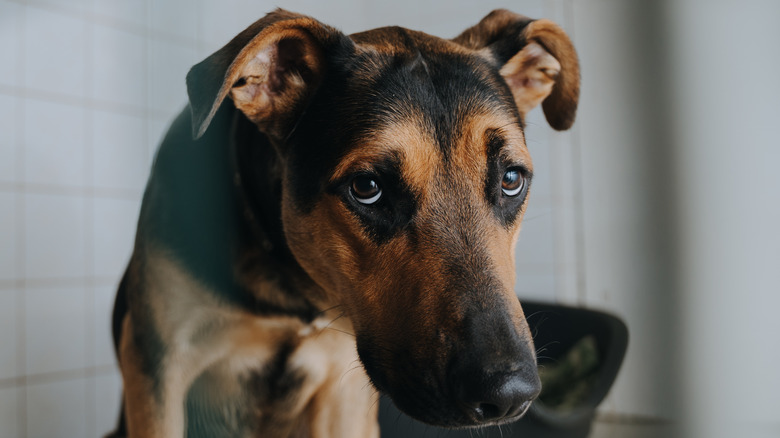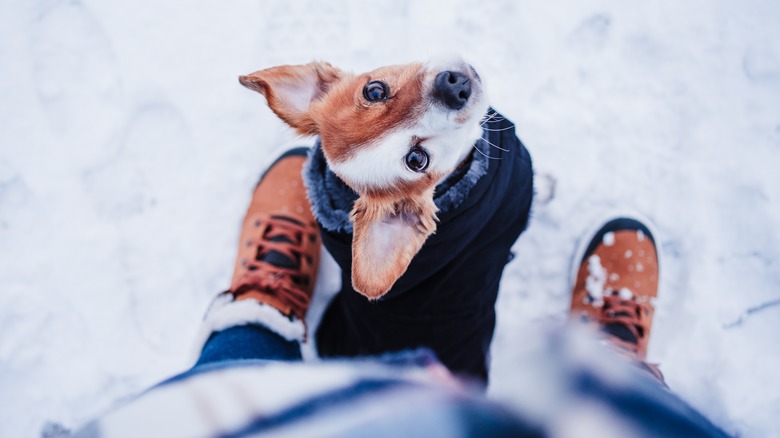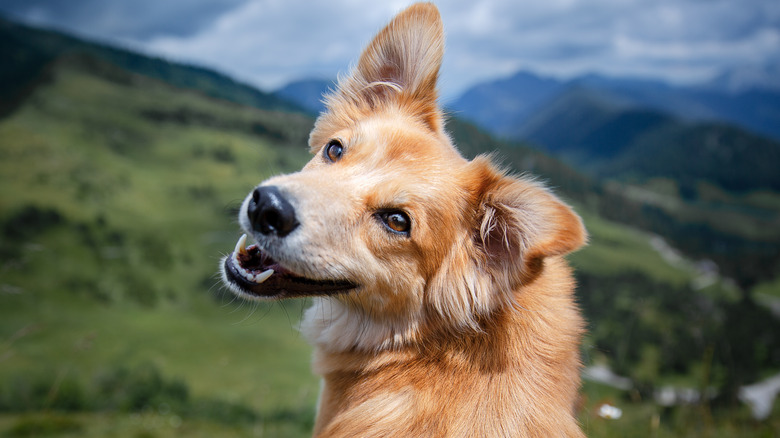How Dogs' Eyes Have Evolved To Communicate With Humans
Many owners resolve not to spoil their dogs with treats — to be more conscientious about their beloved pooch's diet, for the sake of their health. All too often, though, we're just not successful in this effort. According to its 2021 figures, the Association for Pet Obesity Prevention relates that only 39% of dog owners think their pet is overweight or obese, which contrasts sharply with other reports that put the figure over 50%.
At least part of this is surely due to the fact that it's just so darn hard to resist an adorable dog begging for food. How did the crafty canines hone their technique? It's all the eyes, it seems, with which dogs have learned to communicate with humans very well. It's all thanks to evolution.
For pet owners around the world, the bond and companionship shared with a pet is very strong indeed. To strengthen these ties, communication between owner and pet, in whichever form it may take, is vital. With cats, the development of a new method of communication was born from this. As Mercer University animal psychologist John Wright told Live Science, cats are "manipulative," and meow at humans (which they rarely do with other cats) because we wouldn't understand the rubbing, spraying and smelling methods that they use to converse with their own kind. "Vocal communication becomes a tool," as Wright put it.
Why puppy dog eyes are irresistible
Dogs can certainly be more than a little vocal themselves. When they're excited, agitated, when the mail arrives, or just about anything else besides happens, a cacophony of barking can ensue. (Other dogs within earshot sometimes like to join in too, for a "101 Dalmatians"-eque chorus). As noisy as they often enjoy being, though, the expressive face of a dog can ably get a message across to us too. Especially the eyes.
There's a good reason for this. In June 2019, Juliane Kaminski et al published the study "Evolution of facial muscle anatomy in dogs" (posted at the Proceedings of the National Academy of Sciences of the United States of America – PNAS). According to the scientists, the process of domesticating our canine companions "transformed the facial muscle anatomy of dogs specifically for facial communication with humans."
"Puppy dog eyes" is a very familiar concept. It's a doleful, soulful facial expression, which tends to have a high chance of getting one whatever it is they seek. It's just far too cute. It appears that dogs can be just as manipulative with humans' emotions as cats, and that it's largely humans' fault, too.
What separates dogs' faces from wolves'
"Evolution of facial muscle anatomy in dogs" (via PNAS) reports that the domestication of dogs took place approximately 33,000 years ago, and since, "selection processes have shaped both their anatomy and behavior" for optimal communication with their human friends. "As a result of selection during domestication," the study goes on, dogs developed "an ability to read and use human communication in ways that other animals cannot."
A 2017 study, "The role of domestication and experience in 'looking back' towards humans in an unsolvable task," from Sarah Marshall-Pescini et al (via National Library of Medicine), states that seeking eye contact with humans is a common trait in dogs, one that is rarer in wolves (even those accustomed to humans). When presented with a familiar problem-solving exercise that had been altered so they couldn't do it themselves, the dogs were documented seeking eye contact to effectively ask the humans for help.
At an Experimental Biology event in April 2022 (per EventScribe), Duquesne University's Anne Burrows stated that "Domestic dogs and humans are adept at accurately understanding one another's facial expressions and movement around the eyes in dogs is highly valued by humans." Dogs, according to Burrows, have a system of facial muscles that differ subtly from those of wolves, and allow them to make facial movements more akin to those of humans. Puppy dog eyes, according to USA Today, are enabled by a unique muscle known as the levator anguli oculi medialis, which wolves aren't able to manipulate.


